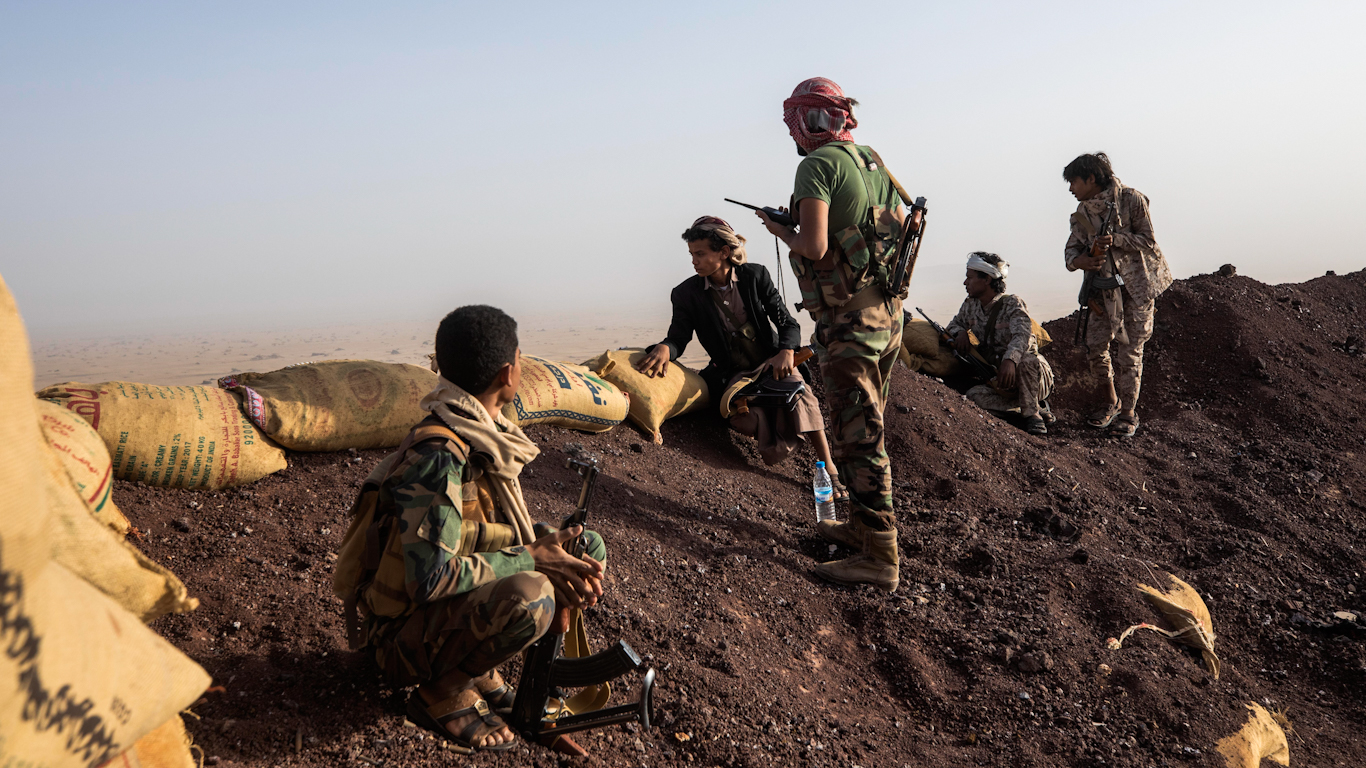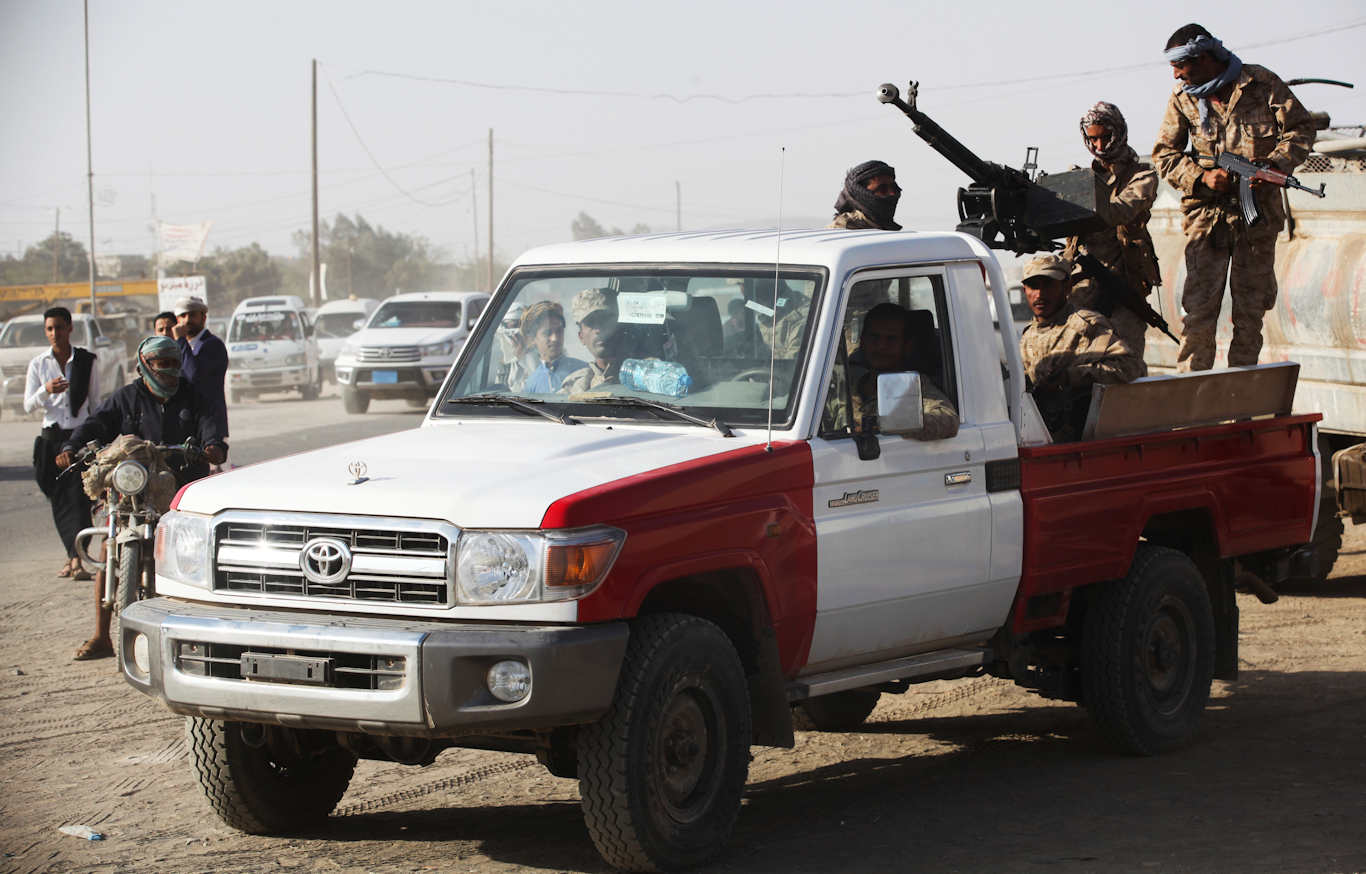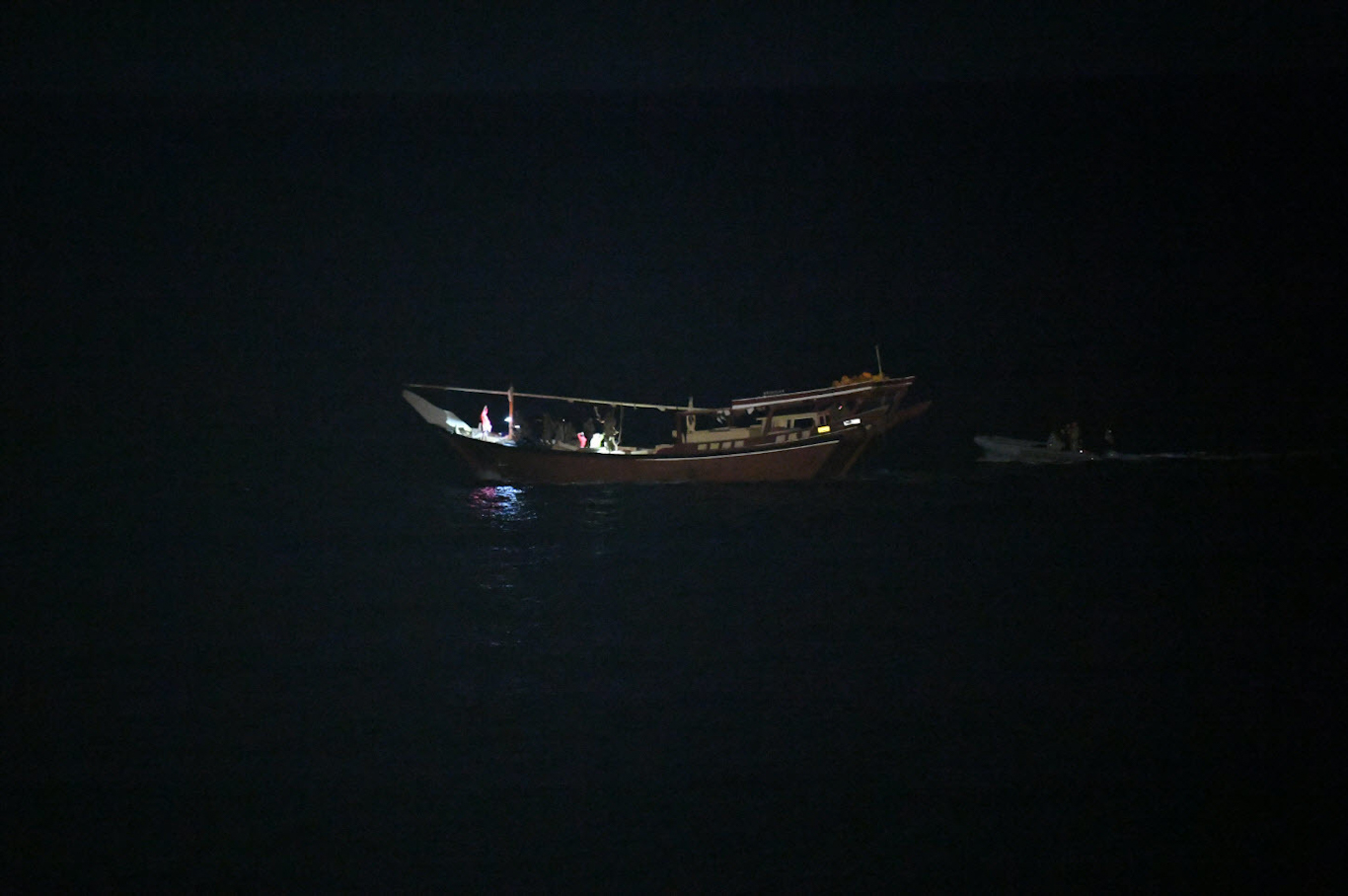
By Ahmed Abdulkareem
Residents in eastern Yemen see the surge of U.S. military personnel as malign and colonial in nature and worry that it will bring not only chaos and instability to their region but could also bring with it the infamous human rights abuses and horrific violations that took place in Afghanistan and Iraq.
AL-MAHRAH, YEMEN — Eastern Yemen has been largely spared the country’s grueling six-year war, with U.S. military personnel in the region, once a rare sight, garnering little more than a curious stare from the passing onlooker. But a new sense of anxiety has settled over the residents of the eastern Al-Mahrah Province amid stories of violent midnight raids by American and Saudi commandos and an increasingly visible U.S. military presence in the region.
In June 2019, a team of U.S. Marines supported by Saudi forces raided a populated neighborhood, dubbed the “Qatar quarter,” in al-Ghaydah city in Al-Mahrah. Witnesses to the raid told MintPress that they believe it was carried out on information provided by local informants. The raid allegedly targeted a home rented by militants fighting on behalf of the Saudi-led Coalition who had just returned from fighting in Marib. The operation provoked fear and questions among neighborhood residents, as three Yemenis and one Saudi were detained as well as many women and children. Locals claim the captives were then taken to al-Ghaydah Airport, where the U.S. military has a presence, according to witnesses and security sources. The conditions of their detention were reportedly similar to detainees in Afghanistan and Iraq, which, according to locals, included being blindfolded and beaten.
“It was about 8:40 a.m. when we were startled by the sounds of American and Saudi troops raiding a nearby house. My sons and daughters were terrified. The chaos and yelling echoed through [the neighborhood],” a resident of the Qatar quarter told MintPress, on condition of anonymity for fear of reprisal. He continued: “After a few moments, many blindfolded people accompanied by women and children were dragged into one of the military vehicles in a humiliatingly provocative manner.” As he recounted the story, it was clear he was holding back tears; he concluded: ”The scene was [reminiscent] of the raids by American forces in Iraq and Afghanistan, but they’re taking place here, not in Fallujah. We haven’t felt safe since.”
U.S. military surges bring chaos, human-rights abuses
Residents in eastern Yemen see the surge of U.S. military personnel as malign and colonial in nature and worry that it will bring not only chaos and instability to their region but could also bring with it the infamous human rights abuses and horrific violations that took place in Afghanistan and Iraq, where thousands of civilians were killed or tortured, some by American troops, others by private military contractors like Blackwater.
Saudi Arabia claims that a man it later identified by his nom de guerre, Abu Osama al-Muhajir, the leader of the Islamic State’s Yemen branch, was captured in the raid along with the group’s finance officer and a number of other fighters. An official Saudi press release makes no mention of cooperation with U.S. forces in carrying out the raid but, according to eyewitnesses and local security sources, “their bodies and accents were unmistakably [American] to the residents.
Working the ‘war on terror’
Coinciding with the withdrawal of U.S. troops from Afghanistan, security experts believe that the Biden administration is strengthening its presence in eastern Yemen, under the pretext of fighting terrorism and preventing the transfer of arms from Iran to the Houthis. President Joe Biden has indeed admitted to a U.S. military presence in the war-torn country. In his letter to Congress, Biden said that “a small number of United States military personnel are deployed to Yemen to conduct operations against al-Qaeda in the Arabian Peninsula (AQAP) and IS.” He added, “The United States military continues to work closely with the Government of the Republic of Yemen and regional partner forces to degrade the terrorist threat posed by those groups.”
In addition to their military presence at al-Ghaydah Airport and on the waters of Yemen’s eastern cities, U.S. forces also have a small base in the so-called Empty Quarter between Yemen and Saudi Arabia, used for launching drones and to pursue those it describes as terrorists in addition to providing “logistical support” to Saudi Arabia. Dozens of the U.S. Marines recently arrived in Al-Mahrah and Socotra, according to locals who spoke to MintPress. U.S. intelligence agencies do indeed consider AQAP the most dangerous branch of al-Qaeda because of its technical expertise and global reach, but many activists, journalists, and local media have warned that the Saudi military occupation is taking place under the cover of the U.S. forces not to combat the overblown threat from AQAP but to allow Saudi Arabia to establish a long-term presence in the province.

The shoring up of the American military presence in the province, home to untapped and potentially lucrative massive oil reserves, comes on the back of several visits by high-ranking American officials to the region. In 2018, Gen. Joseph Votel, head of the U.S. Central Command (CENTCOM) visited Aden, and former President Donald Trump’s adviser Francis Townsend visited Al-Mahrah in March 2020. Christopher Henzel, the U.S. Ambassador to Yemen, made a surprise visit to Al-Mahrah last December, coming from Riyadh as Yemenis were celebrating Independence Day, an occasion commemorating the end of British occupation in northern Yemen. Henzel visited American forces stationed at al-Ghaydah Airport, according to the Al-Mahrah Governorate authorities.
Yemeni NGOs and government officials have been complaining for years that al-Ghaydah Airport is home to secret prisons where Abu Ghraib-style human rights abuses and outright torture are carried out. Local residents believe the abuses are taking place under the supervision of the American forces, or with their knowledge at a minimum, according to Ahmed al-Ali, the head of Southern National Committee to Resist the Invasion, a group dedicated to the protest of a Saudi military presence in the region.
Protests, and even some armed confrontations, have broken out as people in Al-Mahrah fight back against what many view as a Saudi takeover of their governorate. Over the past three years, Saudi Arabia has tightened its control over the province, which borders Oman to the east. In addition to establishing a military presence, the Saudis have tried to exert soft power by establishing Salafist-inspired madrassas and a policy of naturalization and humanitarian aid, a move local authorities claim is being carried out with the support of the United States.
Palpable public anger
The U.S. military presence in the region has also been met with strong local opposition and, rather than reducing any alleged terrorist threat, it has instead handed a highly effective recruiting tool to AQAP. Public anger and frustration against the United States in Yemen are palatable and follow on the heels of the infamous Obama-era drone strikes and raids that killed scores of innocent people at weddings and funerals.
Al-Mahrah residents, by and large, don’t buy into the pretext of fighting terrorism or preventing arms smuggling that is used to justify the foreign military presence in the province. They accuse Saudi Arabia and the U.S. of spreading propaganda and exaggerating the threat of al-Qaeda and ISIS in order to justify their presence, according to the Peaceful Sit-in Committee, a group formed by Al-Mahrah residents to protest any foreign presence in the province.

The vice-chairman of the Peaceful Sit-in Committee, Sheikh Aboud Haboud Qumsit, accused Saudi Arabia and the UAE of seeking to portray Al-Mahrah as an al-Qaeda stronghold. He added, “We make it clear to everyone that these allegations are scandalous and Al-Mahrah will not be a stronghold of al-Qaeda and IS.” He even accused the Saudi-led Coalition forces of being behind any surge in terrorist elements in the region, saying “al-Qaeda and IS have been brought to the province and used to reinforce the foreign presence in Al-Mahrah.”
The increased U.S. military presence in Yemen is not the only provocation giving rise to a sense of frustration and hopelessness. President Biden’s ongoing support of the Saudi-led Coalition’s offensive operations — including its blockade, which is central to Yemen’s disastrous food and fuel shortages — has caused most Yemenis to lose hope that the new U.S. administration will bring about a change in U.S. policy.
On Wednesday, a U.S.-made ScanEagle drone was downed above Marib in an area that has seen heavy fighting between local fighters supporting Ansar Allah and fighters loyal to the Saudi-led Coalition. Footage of the drone after it was shot down, viewed by MintPress, identified the wreckage as belonging to a ScanEagle and bearing a CAGE, the number of a subsidiary of U.S. weapons-maker Boeing. Despite the video evidence, the U.S. has denied the charge.
As local resistance to the American presence in the region grows, it is likely that protests and armed resistance will follow. Military experts in Yemen believe that it is only a matter of time before al-Ghaydah Airport — which hosts American, British and Saudi forces — will come under the same sort of politically charged attacks levied against American forces in Iraq.














No comments:
Post a Comment